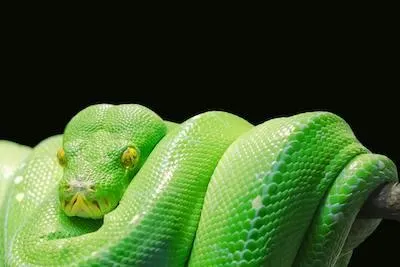Cats, Dogs, Horses, Small Pets, Birds, Poultry & Reptile
(How to Use with Fish is below)
our testimonials & articles about
Cold-Blooded Calmness and Well-being

Where Do Reptile Mites Come From-A Basic Guide
Where Do Reptile Mites Come From?
Reptile mites are tiny parasites that can infest reptiles, including snakes, lizards, and turtles. These mites can cause discomfort and health issues for reptiles if left untreated. In this comprehensive guide, we'll explore everything you need to know about reptile mites, including their identification, prevention, and treatment.
Understanding Reptile Mites
Reptile mites are small, arthropod parasites that feed on the blood of reptiles. They are often reddish-brown or black in color and can be difficult to detect due to their small size. Mites can infest reptiles both in captivity and in the wild, with captive reptiles often acquiring mites from contaminated bedding, substrate, or other reptiles.
Reptiles that are not treated for mite infestations can suffer from a range of health issues and discomfort. Mites feed on the blood of reptiles, leading to anemia and weakness in severe cases. The constant itching and irritation caused by mites can result in skin lesions, inflammation, and secondary infections. Reptiles may exhibit decreased appetite, weight loss, and lethargy due to stress and discomfort. Without proper treatment, mite infestations can worsen, leading to a decline in the reptile's overall health and well-being. In extreme cases, untreated mite infestations can be fatal, particularly in young, elderly, or immunocompromised reptiles. Therefore, it is essential to promptly identify and address mite infestations to prevent potential complications and ensure the health of your reptile companions.
Types of Reptile Mites
Reptile mites encompass various species that can infest reptiles, including snakes, lizards, and turtles. These mites belong to different genera and have distinct characteristics and behaviors. Some common types of reptile mites include:
Ophionyssus natricis (Snake Mites):
These mites are one of the most prevalent types found in captive reptiles, particularly snakes. They are tiny, reddish-brown parasites that feed on the blood of reptiles. Snake mites can quickly multiply and infest entire collections if left unchecked.Ophionyssus acertinarius (Turtle Mites):
Turtle mites primarily infest aquatic turtles, including both freshwater and terrestrial species. They are often found in damp environments and can cause irritation and skin lesions in affected turtles.Hypoaspis spp. (Substrate Mites):
Substrate mites are commonly found in reptile enclosures, where they feed on organic matter such as feces, shed skin, and uneaten food. While substrate mites do not directly parasitize reptiles, they can become a nuisance and may contribute to overall poor enclosure hygiene.Radfordia spp. (Lizard Mites):
Lizard mites infest various species of lizards and are similar in appearance to snake mites. They can cause irritation, skin lesions, and stress in affected lizards if left untreated.Geckobia spp. (Gecko Mites):
These mites primarily infest geckos and are often found in the skin folds and crevices of their bodies. Gecko mites can cause itching, irritation, and discomfort in affected geckos.
Each type of reptile mite presents unique challenges and requires specific management and treatment strategies. Regular monitoring and preventative measures, such as quarantine protocols and enclosure hygiene practices, are essential for preventing mite infestations and maintaining the health of captive reptiles. Additionally, prompt identification and treatment of mite infestations are crucial for preventing potential complications and ensuring the well-being of reptile companions.
Signs of Reptile Mite Infection
Excessive Scratching:
Reptiles infested with mites may scratch or rub against surfaces in an attempt to alleviate itching and discomfort caused by the parasites.Visible Mites:
In severe infestations, mites may be visible crawling on the reptile's skin, particularly around the eyes, nostrils, and vent.Dull or Cloudy Eyes:
Mites can cause irritation and inflammation around the eyes, leading to dull or cloudy appearance.Skin Lesions:
Reptile mites can cause skin irritation and lesions, including redness, swelling, and scabbing.Decreased Appetite:
Infested reptiles may show a decreased appetite or reluctance to feed due to stress and discomfort caused by the mites.Weight Loss:
Severe infestations of reptile mites can lead to weight loss and overall poor health in affected reptiles.
Preventing Reptile Mite Infection
Quarantine New Reptiles:
Quarantine new reptiles for at least 30 days before introducing them to existing reptiles to prevent the spread of mites and other parasites.Maintain Clean Enclosures:
Keep reptile enclosures clean and free of debris, feces, and leftover food, as these can attract mites and other pests.Monitor Reptiles Regularly:
Routinely inspect reptiles for signs of mites, including excessive scratching, visible mites, and skin lesions.Practice Good Hygiene:
Wash your hands thoroughly before and after handling reptiles to prevent the spread of mites and other pathogens.Use Preventative Treatments:
Consider using preventative treatments such as mite sprays or powders designed specifically for reptiles to help prevent infestations.
Treating Reptile Mite Infestations
Quarantine Affected Reptiles:
Quarantine reptiles suspected of being infested with mites to prevent the spread of infestation to other reptiles.Clean and Disinfect Enclosures:
Thoroughly clean and disinfect the infested reptile's enclosure to remove mites and their eggs.Treat Reptiles with Mite-Specific Products:
Treat affected reptiles with mite-specific products, such as sprays, powders, or topical treatments, to kill mites and their eggs.Monitor and Repeat Treatment as Needed:
Monitor infested reptiles closely and repeat treatment as needed until the infestation is fully eradicated.Prevent Reinfestation:
Take steps to prevent reinfestation by regularly cleaning and disinfecting enclosures, practicing good hygiene, and quarantining new reptiles.
Conclusion
Reptile mites can pose a significant threat to the health and well-being of captive reptiles. By understanding the signs of mite infestation, implementing preventative measures, and promptly treating affected reptiles, reptile keepers can help ensure the health and longevity of their beloved pets.
Regular monitoring and proactive management are key to preventing and addressing reptile mite infestations effectively.
A Trained Animal Communicator Connects with Your Pet
With every order, a trained animal communicator connects with your pet to choose the right blend of flower essences
(e.g. Bach Flower Essences) for calming their anxiety. Custom blended flower essences are natural pet calming products.






Calm Animal Solutions
Calm Animal Solutions offers customized, natural remedies for dog anxiety, and are calming for cats. Plus, we create blends for horses, small animal pets, birds, poultry, reptiles, and fish.
#CalmAnimalSolutions
on Instagram.
©2024, Catherine Winfree. All rights reserved.
Mandatory FDA Notice: The statements made regarding Calm Animal Solutions have not been evaluated by the Food and Drug Administration. These products are not intended to diagnose, treat, cure, or prevent any animal disease. Although the ingredients in Calm Animal Solutions are generally regarded as safe, you are encouraged to consult your veterinary before using any essence product (such as Bach Flower Essences, for example).
A Trained Animal Communicator Connects with Your Pet
With every order, a trained animal communicator connects with your pet to choose the right blend of flower essences (e.g. Bach Flower Essences) for calming their anxiety. Custom blended flower essences are natural pet calming products.





Mandatory FDA Notice: The statements made regarding Calm Animal Solutions have not been evaluated by the Food and Drug Administration. These products are not intended to diagnose, treat, cure, or prevent any animal disease. Although the ingredients in Calm Animal Solutions are generally regarded as safe, you are encouraged to consult your veterinary before using any essence product.

Home | Contact | Terms | Privacy Policy | About Catherine
©2024, Catherine Winfree. All rights reserved.


